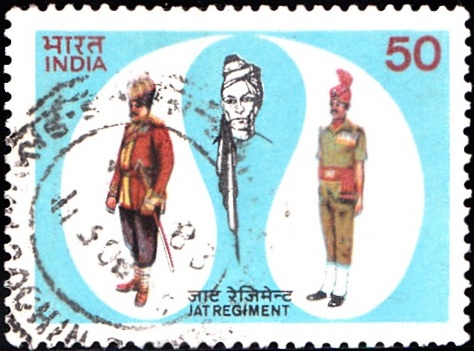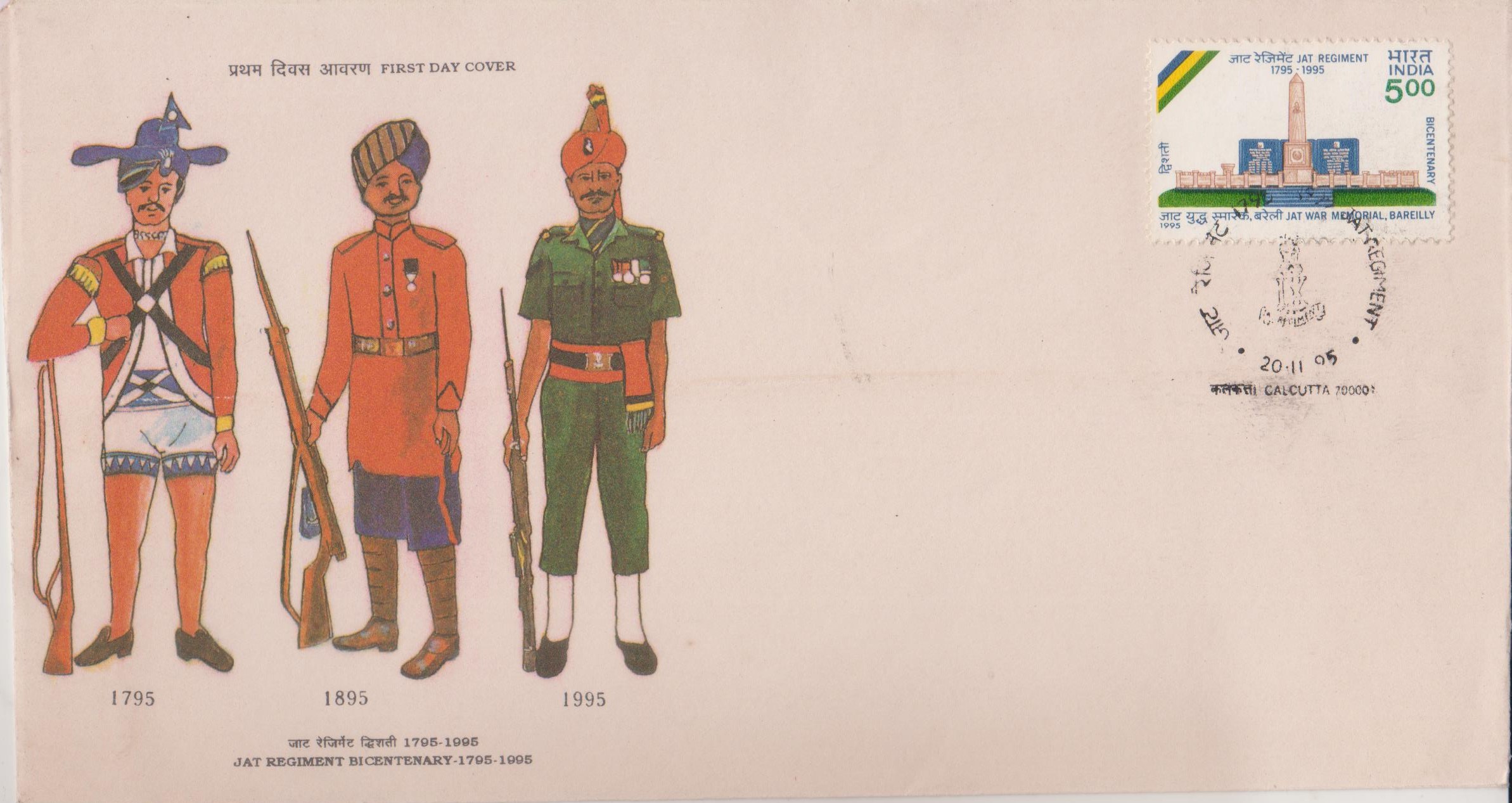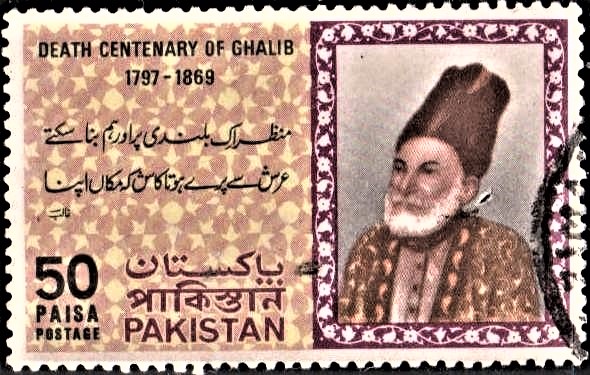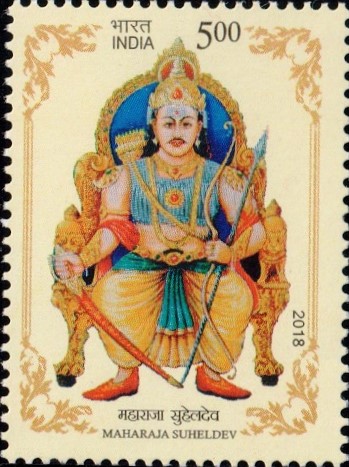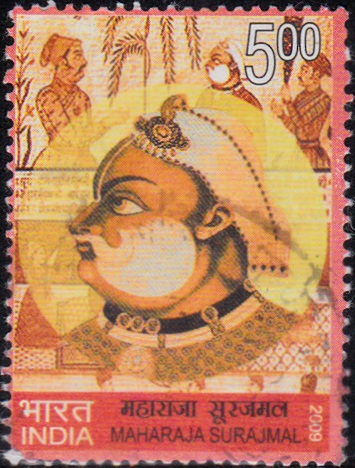
Maharaja Surajmal
A commemorative postage stamp on Maharaj Suraj Mal (the Plato of the Jat people/Jat Odysseus), ruler of Bharatpur, Rajasthan :
Issued on Dec 29, 2009
Issued for : The Department of Posts is happy to issue a commemorative postage stamp on Maharaja Surajmal.
Credits :
Stamp design, FDC & Cancellation : Alka Sharma
Type : Stamp, Postal Used
Colour : Multi colour
Denomination : 500 Paise
Printing Process : Wet–offset
Printer : India Security Press, Nasik
Name : Sujan Singh
Born on Feb 13, 1707 at Bharatpur, Rajasthan, India
Died on Dec 25, 1763 at Shahdara, Delhi, India
About :
- Maharaja Surajmal was born on 13th February 1707 (Magh Mahina, Shukla Paksha Dashmi, Samvat 1763). He was the son of Maharaja Badan Singh and his wife Rani Devaki. He was influenced by the sacrifice of Jat revolutionaries like Veer Nandram Jat, Veer Gokul Singh, Veerdheer Rajaram, Thakur Churaman of Agra–Bharatpur Mandal, who had revolted against forceful collection of tax by Mughal rulers.
- He established an independent Bharatpur state and built historical temples and buildings in Bharatpur, Deeg, Kumher, Vair and near Delhi. Maharaja Surajmal earned a name for bravery in his youth by winning the Chandros (Aligarh) “Kaul” battle killing Asad Khan in 1747. He helped Ishwari Singh in the historical battle of Bagru (Jaipur) on 20th August 1748 where, by defeating the joint army of seven Rajas, he put lshwari Singh on the throne of Jaipur. On 1st January 1750, he defeated Mir Bakshi and his army forcing to flee from Faridabad and Ballabhgarh.
- He won “Ghasera” battle in 1753, defeated Nawab Gajrauddin on 10th May 1753. On 18th May 1754 in Jat-Maratha battle, the Maratha siege of ‘Kumher‘ lasted for four months and Maharaja Surajmal got victory by killing Khanderao, the son of Indore‘s Holker.
- On 12th June 1761, he won Agra and Farruk Nagar in 1763 by defeating Baluchs.
- After a lifetime spent in several battlefields where his valour became legendary, Maharaja Surajmal sacrificed his life on 25th December 1763 in Shahadra (Delhi). He respected all sects of religion. He loved art and traditions. He was a great builder – Deeg fort, Nawal Singh‘s Haveli & Jawahar Singh‘s Chhatri in Agra Fort are examples. Maharaja Surajmal ruled over Bharatpur, the state of which then included Dholpur, Agra, Etah, Etawah, Farruk Nagar, Mainpuri, Aligarh, Bulandshahar, Khurja, Meerut, Kanpur, Gurgawa, Rohtak, Jhajjar, Bahadurgarh, Rewari, Neemrana, Mewat, Alwar, Faridabad, Ballabhagarh and Mathura. It was one of the biggest state of the time.
- Text : Based on the material provided by the Proponent.
Subscribe
Login
0 Comments
Oldest


 Issued by
Issued by